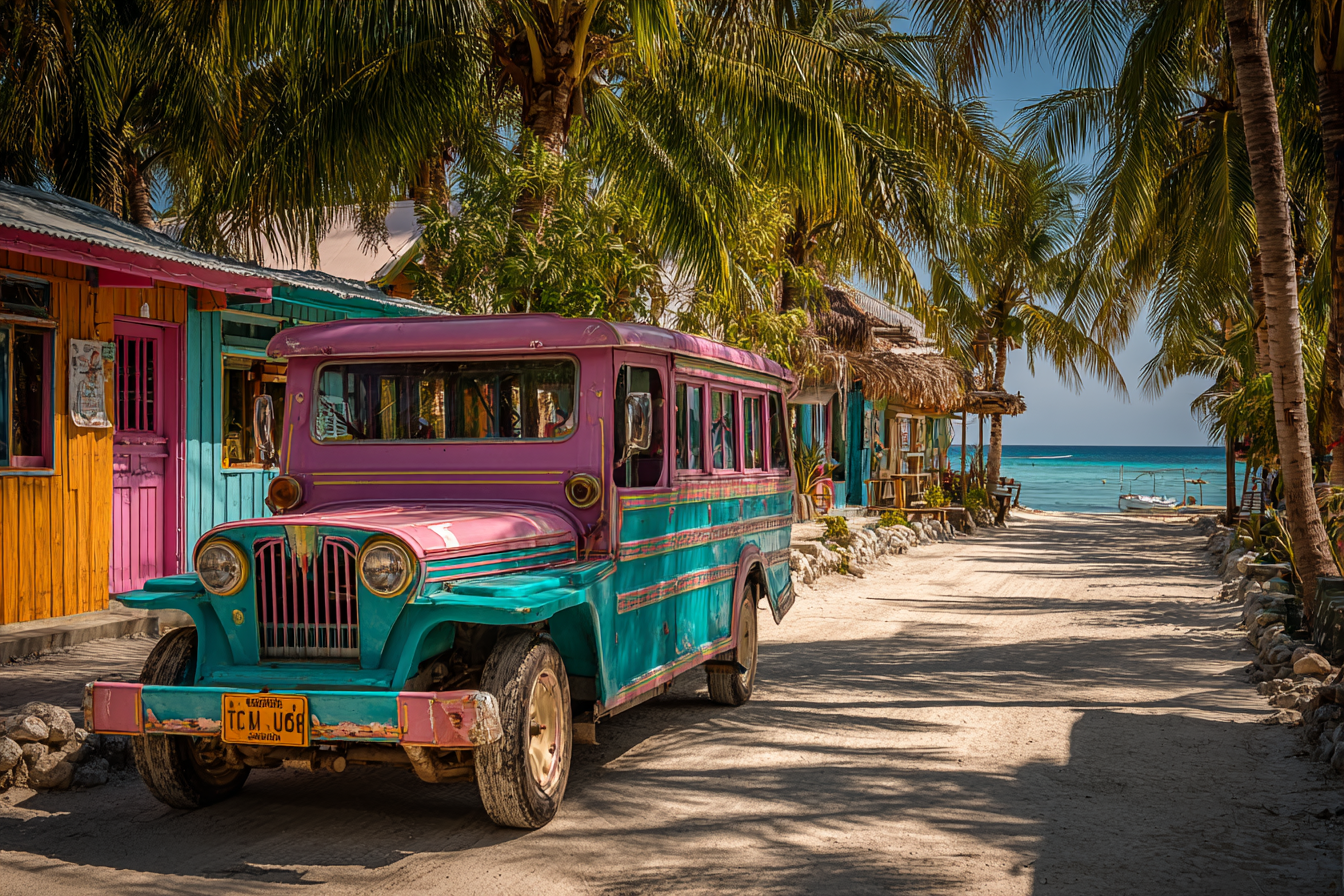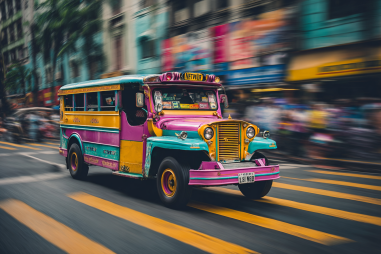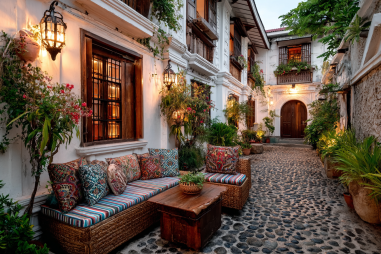Malapascua Island, located in the northern part of Cebu in the Philippines, is well-known for its pristine beaches, vibrant marine life, and the opportunity to dive with thresher sharks. Whether you’re a seasoned traveler or a first-time visitor, getting around this charming island is part of the adventure. Understanding the various transportation options available will help you explore Malapascua efficiently, comfortably, and safely. From local tricycles to peaceful walks along sandy paths, this guide breaks down everything you need to know about navigating the island.
Overview of Transportation Modes on Malapascua
Malapascua Island is relatively small, measuring just about 2 kilometers in length and a kilometer in width. Because of its size, transportation generally revolves around simple, traditional modes rather than heavy vehicles or public transit systems. The main transport methods include tricycles, motorbikes, walking paths, and boat transfers, each catering to different travel needs, preferences, and budgets.
Visitors typically rely on a combination of these options. For example, you might take a boat to Malapascua, use a tricycle or motorbike to get around the island, and enjoy several walks along scenic beach routes. The island’s layout makes most places accessible by foot, but having a motorized option can save time, especially when heading to remote dive sites or resorts.
Tricycles and Motorbikes
The most common mode of transportation on Malapascua are tricycles—motorcycles fitted with a sidecar to carry passengers or goods. These are widely used by locals and tourists alike because they are affordable, flexible, and suitable for the island’s narrow roads and rougher terrain. Tricycles are perfect for short trips between the ports, resorts, restaurants, and dive shops.
For those looking for more freedom, renting a motorbike is also an option. Motorbikes offer the ability to explore the island at your own pace and reach less accessible areas. Rental shops are available, but it’s important to have some motorbike riding experience because roads can be uneven, and traffic rules might be less strictly enforced than in urban areas.
Whether you choose a tricycle or a motorbike, always agree on the fare before your trip to avoid confusion. The rates are generally modest, but checking in advance helps ensure a smooth ride. If you decide to ride a motorbike yourself, don’t forget your helmet, and be cautious, especially after rain when roads can become slippery.
Walking Routes and Island Accessibility
One of the delightful aspects of Malapascua Island is its walkability. The island’s size means you can easily explore many areas on foot. Walking is often the best way to enjoy the natural beauty, including beachside trails, coconut groves, and stunning viewpoints that are inaccessible by vehicles.
Most resorts, restaurants, and dive shops are clustered along the main paths near the island’s two main beaches — Bounty Beach and Logon Beach. From these hubs, it’s a pleasant walk to the northern or southern ends of the island, where you’ll find quieter beaches and local fishing villages.
Walking also allows for spontaneous exploration and mingling with local residents. Comfortable footwear is recommended, and while paths near the beach are usually well-trodden, some inland areas might be more rugged. Evening walks can be magical but bring a flashlight or phone light to navigate areas with limited lighting safely.
Boat Transfers and Island Hopping Transport
The gateway to Malapascua Island itself is by boat, generally from the small port town of Maya on Cebu Island. The usual mode is a small motorized boat or bangka that takes about 30 minutes to cross the clear waters. These boats run regularly throughout the day, connecting travelers to and from the island.
Besides the essential ferry service, boats are also used for island-hopping tours that take visitors to nearby attractions such as Kalanggaman Island, Gato Island, and nearby dive sites. If you plan to explore the neighboring islands, arranging a boat tour through local operators is a good choice. These boat rides vary in length and can be private or shared, depending on your preference and budget.
Keep in mind that schedules are weather-dependent and can be affected by strong winds or rough seas, so flexibility is key. Also, it’s wise to confirm your boat transfers a day before and verify the safety standards of the vessels you will board.
Renting Vehicles: Pros and Cons
For some visitors, renting a motorbike or even a bicycle is appealing because it provides mobility and independence. Here’s a quick breakdown of the pros and cons:
- Pros:
- Freedom to explore the island on your own schedule
- Easier access to remote beaches or dive spots
- Potential cost savings compared to frequent tricycle rides
- Cons:
- Road conditions can be uneven and sometimes challenging for inexperienced riders
- Weather exposure — sunny days or sudden rain can impact your trip
- Limited availability for larger vehicles; cars are not practical on the island
- Safety risk if not familiar with local traffic rules or riding styles
If you decide to rent, opt for reputable rental shops that offer well-maintained bikes and helmets. Always inspect the vehicle before riding and communicate clearly about rental terms, insurance, and emergency contact information.
Tips for Safe Travel on the Island
Ensuring your safety while navigating Malapascua Island makes your trip all the more enjoyable. Here are some travel tips to keep in mind:
- Always wear a helmet: Whether riding a motorbike or a tricycle, helmets protect you from injury in case of accidents.
- Agree on prices upfront: Negotiate fares with tricycle drivers before riding to avoid misunderstanding.
- Be cautious on roads: Watch out for potholes, loose sand, and pedestrians, especially in less developed parts of the island.
- Stick to designated paths: When hiking or walking, use established trails to avoid damaging the fragile environment or encountering hazards.
- Respect local customs and drivers: Malapascua is a laid-back place; patience and friendliness go a long way.
- Check boat schedules and weather: For water transfers and tours, avoid risk by timing your trips during calm weather conditions.
- Carry essentials: Bring water, sunscreen, insect repellent, and a mobile phone with emergency contacts.
Following these tips can help you stay safe and comfortable, whether you’re zipping around on a motorbike or strolling along the beach at sunset.
Enjoying Every Corner of Malapascua
Getting around Malapascua Island is straightforward once you familiarize yourself with its transportation options. Whether you prefer the ease and comfort of a tricycle, the freedom of a rented motorbike, or the peacefulness of a walk along the shore, the island offers multiple ways to suit every traveler’s style.
Beyond getting from point A to point B, traveling on Malapascua allows you to soak in its natural beauty, connect with the local community, and discover hidden gems tucked away in quiet corners. Embrace the simplicity of island life, prepare adequately, and you’ll find that navigating Malapascua enhances the overall adventure and magic of this tropical paradise.







